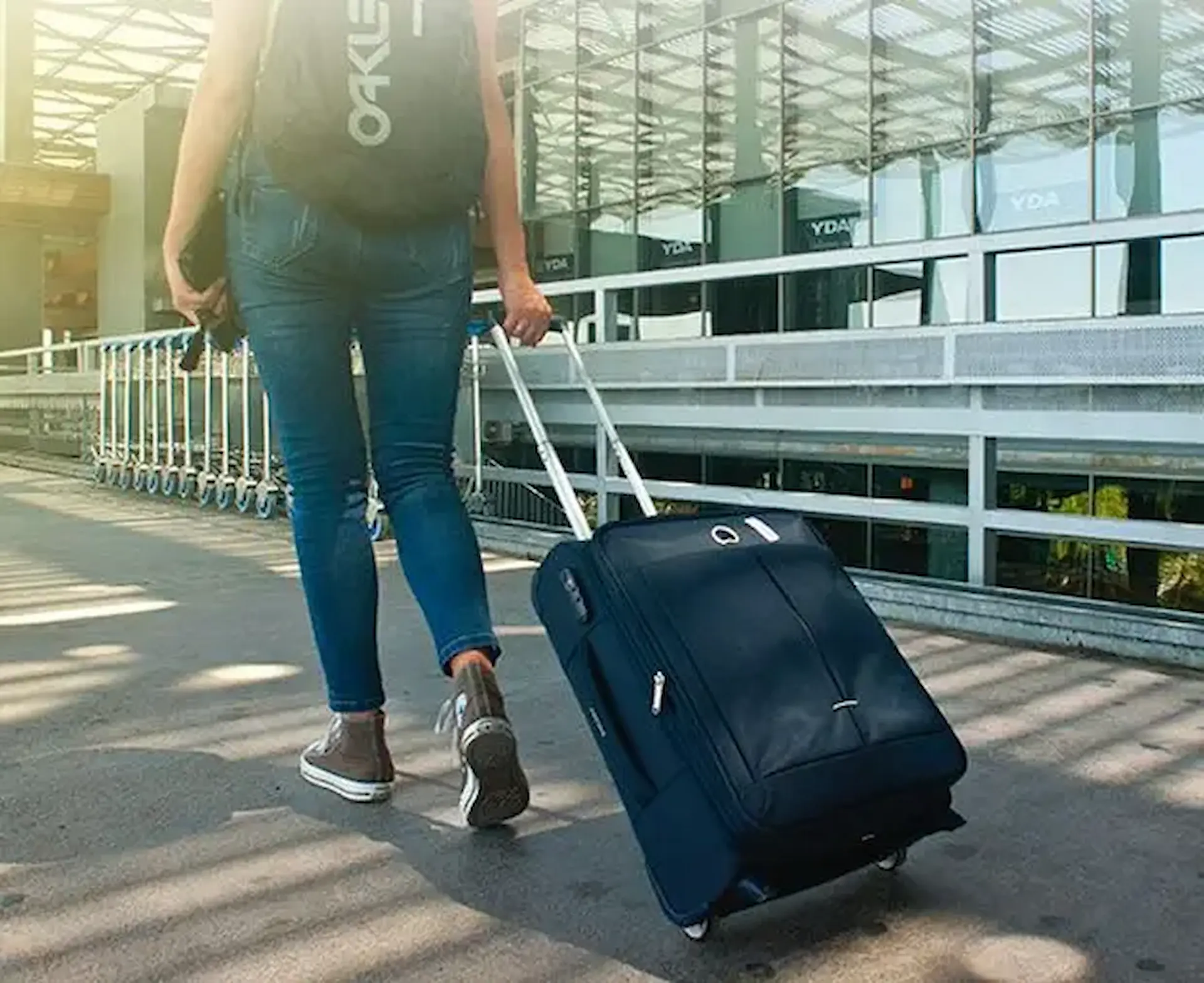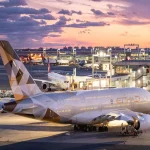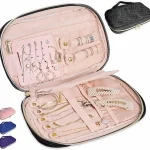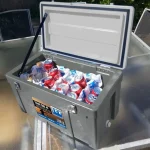If you’ve ever stood at baggage claim wondering if your overstuffed suitcase will show up, only to realize you packed four extra outfits and still forgot your charger, you’re not alone. Traveling light sounds great in theory, but in practice, it requires a balance: taking what you need, leaving what you don’t, and still feeling prepared.
The reality is, the lighter you travel, the freer you move. You skip check-in lines, avoid luggage fees, and never waste energy hauling things you won’t use. But packing light isn’t about deprivation. It’s about intention.
This guide will walk you through practical, research-backed strategies to travel light without sacrificing essentials. From packing checklists to space-saving gear, this is everything you need to master the art of efficient travel.
Why Does Traveling Light Matter More Than Ever?
Traveling light isn’t just a trend, it’s a response to how modern travel has changed. Airlines have tightened baggage allowances, low-cost carriers charge for everything, and quick airport transfers are easier with less weight. Beyond that, minimalist travel reduces stress.
When you travel with fewer items, you make fewer decisions. You know exactly where things are. You’re more mobile, more adaptable, and often safer, especially when navigating public transit or crowded cities.
A 2023 study from Expedia found that 64% of travelers who pack carry-on only reported feeling “less anxious” during transit. Less gear means less to lose, break, or worry about.
What’s the First Step to Packing Smart?
Before you even pull out a suitcase, planning begins with one thing: a customized checklist. Generic packing lists often include too much. A smart list starts with context: where you’re going, for how long, what the weather looks like, and what you’ll be doing.
Use tools like PackPoint or TripList to generate dynamic packing lists based on destination, length of stay, and planned activities. These apps also factor in local weather forecasts and customs regulations.
Here’s a rule that experienced travelers follow: don’t pack for worst-case scenarios, pack for most-likely ones. You can adapt on the road more easily than you think.
How Can You Choose the Right Luggage?
Your bag should match your travel style. For weekend getaways, a 30-40L travel backpack often works best. For longer trips, a carry-on-sized roller bag with compression straps offers structured packing.
Avoid bulky suitcases unless absolutely necessary. Instead, look for:
- Lightweight frames under 5 lbs
- Expandable compartments
- Water-resistant zippers and materials
- Smart organization (top-loading or clamshell style)
In 2025, popular models include the Nomatic Navigator Backpack, Away Carry-On Flex, and Osprey Farpoint 40, each built for light travel, with dedicated compartments for tech, clothing, and documents.
What Essentials Should Always Go in Your Bag?
Even the most stripped-down traveler carries a core set of essentials. Your baseline includes:
- Clothing suited for layering, not bulk: two bottoms, three tops, one outer layer, one sleepwear, and fresh underwear for each day (or every 2–3 days with laundry).
- Toiletries in solid or TSA-compliant liquid form: toothbrush, toothpaste, face wash, deodorant, sunscreen, and a razor. A small comb, lip balm, and menstrual products if needed.
- Documents: passport, ID, visa (if applicable), printed tickets, and copies of travel insurance. A digital backup in cloud storage is a good safeguard.
- Electronics: phone, charger, universal adapter, power bank, and earphones.
- Medication and health items: prescriptions, pain relievers, and motion sickness meds. Always carry these in your personal item, not your checked bag.
Everything beyond this list depends on your destination and travel length. But these core items shouldn’t be skipped.
How to Pack Clothes Efficiently and Save Space?
Space efficiency starts with how you fold. While rolling clothes is often preferred for reducing wrinkles and saving space, combining it with compression packing cubes gives you maximum efficiency.
Use the 5-4-3-2-1 method: five tops, four bottoms, three pairs of shoes, two jackets/sweaters, one hat or accessory set. Modify based on season and trip length.
Pack clothing that’s versatile and layerable. Neutral colors, wrinkle-resistant fabrics, and multi-use pieces are ideal. For example, a black T-shirt works for hiking and dinner. Merino wool shirts offer odor resistance and fast drying.
Shoes take up the most space, stick to one walking shoe and one compact alternate like sandals or flats. Wear the heavier pair during travel.
Which Toiletries Should You Pack (and Which to Skip)?
Travel toiletries are one of the most overpacked categories. Instead of bringing your full-size products, prioritize travel-sized or solid alternatives.
Solid shampoo bars, deodorants, and toothpaste tablets reduce liquid volume and spill risk. Brands like Ethique and Lush make TSA-friendly solid toiletry kits that last for weeks.
Stick to items that are hard to find at your destination, like prescription creams or specialty products. Items like body wash, shaving cream, or cotton swabs can usually be purchased locally for cheap.
Keep all liquids in a clear, quart-sized bag to comply with the TSA 3-1-1 rule. That means liquids under 3.4 oz, packed together in one resealable pouch. Store it in an easy-access pocket, you’ll need to remove it at security.
How to Avoid Forgetting Important Items?
Forgetting essentials doesn’t happen because you’re careless. It happens when you rely on memory alone. The best way to prevent it is by using a consistent, editable checklist, printed, saved in an app, or both.
Split your packing over two days. On day one, prep everything. On day two, review and edit. You’ll catch more errors this way.
Use labeled packing cubes or color-coded pouches to group items by type, electronics, toiletries, clothing. Keep daily use items in one place, and do a final visual sweep of your home or hotel room before leaving.
Set phone reminders for non-visible items like passports, chargers, and medication. These are the most frequently forgotten.
What Are Common Overpacking Mistakes?
Most people overpack because they’re afraid of being unprepared. But you don’t need backup outfits for every day or gear for unlikely scenarios.
Avoid these common traps:
- Packing “just in case” shoes or formalwear you won’t realistically wear
- Bringing large bottles of shampoo, lotion, or perfume
- Duplicating tech, two cameras, a tablet, and a laptop often aren’t necessary
- Carrying books when one e-reader or app can replace them all
If you’re not sure you’ll use it, don’t pack it. And if it’s available at your destination (laundry, toiletries, a rental coat), leave it behind.
What Tools Help You Travel Light and Stay Organized?
Light travel is easier with the right gear. Start with packing cubes, which keep clothes compressed and categorized. Compression versions save even more space.
Vacuum-seal bags are excellent for bulky items like jackets or sweaters, especially if you’re traveling somewhere cold. Just remember, you’ll need access to air suction or rolling pressure to reseal them.
For toiletries, use leakproof bottles and silicone containers. Brands like Matador and GoToob make durable, TSA-sized bottles that won’t burst at altitude.
Digital tools help too. Apps like Baggage, PackTeo, or LuggageHero can help you track items and plan around airline weight restrictions.
How to Adjust Packing Based on Trip Type?
Every trip is different. A weekend city break needs far less than a multi-week international adventure. Here’s how to tailor your packing:
- Weekend Getaways: One outfit per day, no more than two pairs of shoes. Use a backpack only.
- 2-Week Trips: Plan for laundry mid-way. Bring quick-dry clothes and re-wear items.
- Urban Travel: Emphasize style, layering, and comfortable walking shoes.
- Outdoor Adventures: Prioritize functional clothing, performance layers, and waterproof gear.
- Business Travel: Stick to wrinkle-free items and color-matched outfits. Use a garment folder if you’re carrying dress clothes.
Packing smarter isn’t about taking less. It’s about taking the right things based on your destination and goals.
FAQ: Pack and Go Travel Tips
How many outfits should you pack for a 7-day trip?
Three to four outfits, with laundry once mid-trip. Focus on versatile, re-wearable pieces.
Is it better to roll or fold clothes in a suitcase?
Rolling saves more space and reduces wrinkles. For formalwear, use flat folds or garment folders.
What’s the best way to avoid forgetting chargers or passports?
Use a checklist and keep daily-use items in a separate pouch that you always check before leaving.
How can you stay under airline weight limits?
Use a digital luggage scale before flying, wear heavier items on the plane, and choose lightweight luggage to begin with.





